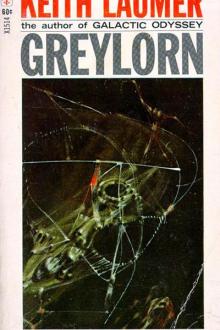Justice League of America - Batman: The Stone King Alan Grant (e book reader pc txt) 📖

- Author: Alan Grant
Book online «Justice League of America - Batman: The Stone King Alan Grant (e book reader pc txt) 📖». Author Alan Grant
Mills didn't reply. Casting his eyes to the side, Peter could see the renowned archaeologist's handsome face as he appraised the night sky, now filled with a thousand glittering stars. The aquiline nose and prematurely silver-gray hair gave Mills a distinguished, almost aristocratic look that men envied and women admired.
"I mean, look what they discovered about Stonehenge," Peter went on, irritated with himself for being so sensitive to Mills's unspoken criticism.
It had been rumored for centuries that the massive stones that made up England's most famous neolithic monument were somehow connected to the night sky. But confirmation had to wait for the creation of computer software that could accurately plot the changes in the night sky due to Earth's tilt against the solar plane. Now, archaeologists were turning up established and potential stellar alignments at ancient sites all over the world.
"A possibility, yes. But not a probability," Professor Mills said smoothly. "We mustn't allow preconceptions to color anything we might find."
Peter took a deep breath. Sensing he had more to say, Jenny grasped his arm and squeezed it lightly, a gentle hint that he'd said enough already. Peter was the professor's star student, and they'd always argued in friendly, if heated, fashion. But their relationship had deteriorated seriously since the previous year.
Jenny sighed. Peter and Robert had good cause to dislike each other, and she had given them that cause. With increasing frequency, she found herself trying to act as a buffer between them. Somehow, it was easier than facing up to what had happened and sorting it out like intelligent adults.
"We should join the others," Jenny found herself saying. "They'll be cursing us for slacking while they do all the work."
She took a step away, tugging on Peter's arm for him to follow. Obstinately, he didn't budge, and Jenny's heart sank.
"One of the reasons our profession advances so slowly," Peter said, choosing his words carefully, "is that certain older archaeologists refuse to approach their work with an open mind."
Robert Mills smiled, his expression invisible to the others in the darkness that swathed the landscape.
"I'll check with Lorann and the guys," he said amicably, as if unaware of the accusation and insult in Peter's words. Flicking on the heavy-duty flashlight he held in one hand, the professor walked away across the pyramid's flattened top.
It was almost a month since the Gotham Dam had burst and its swirling waters divulged the mysterious structure. What the expedition had established was astonishing. Radiocarbon dating of vegetable fibers found in the structure's foundations pointed to its having been built approximately forty-five hundred years ago–the only such pyramid ever discovered in America. Unlike the Great Pyramids at Giza, this one had been built in steps, in the same fashion as the pyramids of Central and South America, or the ziggurats of ancient Babylon. Europe's largest Stone Age structure, Silbury Hill in England, had been similarly constructed. Ten feet of rock, ten feet of chalk with soil infill–the process repeated until the pyramid stood a hundred feet high, ending in a flat, rocky platform about thirty feet square.
Reconstruction of the dam was due to begin in another three or four months, after the structural engineers had finished their investigations. In the meantime, Robert Mills and his select team of top students had been asked to excavate and analyze as much of the site as they could in the brief time left.
They had found an enigma, wrapped in a mystery.
"We've all heard the legends surrounding Silbury," one of the other students, David Rymel, had said. "A giant king buried at the center, a hidden chamber filled with treasure. Any chance of that here, Professor Mills?"
They were digging a trench into the side of one of the chalk layers, their progress impossibly slow as every trowel of soil was painstakingly sifted for artifacts. They'd found a pea-sized bead of black jet, some charred animal bones, and a single broken deer antler with a crude spiral incised on it.
"Unlikely," Robert Mills replied. "Remember, nothing was ever found at Silbury. Still, it's not completely impossible," he admitted. "Only a full-site sonic scan would reveal if there's anything inside, and unfortunately, that's a resource we don't have this time around."
Under Mills, the same team had spent the previous summer on excavations at Sipin in northern Peru, working on vegetation-covered ruins that dated back more than two thousand years. It was a well-funded operation, meticulously planned, and it paid off in spectacular fashion. They'd found elaborate tombs buried deep inside the ruins, in several layers, and a rich profusion of priceless jade face masks and jewelry.
"The Gotham pyramid is much older than its counterparts at Sipan, and of completely different structure," Mills went on. "They were tombs, especially built to house the bones of the tribe's religious leaders. Our pyramid would appear to have been built for a different purpose entirely. Religious, perhaps."
"That's what they always say." There had been a sneer in Peter Glaston's voice, one that was often there these days, Jenny had reflected sadly. "When they don't know what something was for, they say it had 'religious' or 'ritual' significance."
"Then perhaps you could enlighten us, Peter," Mills said coldly, for the first time visibly stung by the younger man's criticisms. "Why do you think the pyramid was built?"
"I can't say for sure, of course." Peter rose to the challenge. "But I can make several suggestions. First, the chalk/granite makeup: alternate layers of organic and inorganic material. Almost like a gigantic storage battery. But what kind of energy would such a thing store?"
Peter's eyes were alight as he took off on one of his flights of fancy. Speculative archaeology, he called it.
He'd continued, the words falling over themselves to get out: "Well, science has recently shown that Earth energies do exist"–he cast a quick, knowing glance at his teacher–"despite most archaeologists having denied it for years. There's piezoelectricity, generated by the grinding of quartz rocks under the surface. On a small scale, Japanese





Comments (0)